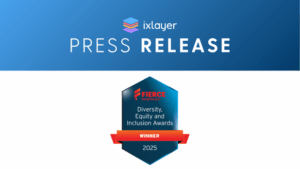Breaking the Cycle: Direct-to-Patient Campaigns Can Improve Access for Migraine Patients
Each June, Migraine Awareness Month brings renewed attention to one of the most underdiagnosed and undertreated neurological conditions in the world. More than 39 million Americans live with migraine, yet the majority navigate their condition without a formal diagnosis, let alone a personalized treatment plan.
And the problem isn’t just awareness—it’s access.
Biopharma brands and healthcare organizations are working to close this gap through direct-to-patient (DTP) programs, providing a pathway for patients to move from education to diagnosis, treatment, and support.
The Access Crisis in Migraine Care
Migraine doesn’t just cause pain—it disrupts work, relationships, and quality of life. But despite its impact, migraine care remains fractured:
- Less than 5% of people with migraine have been seen by a healthcare provider, received a proper diagnosis, and obtained appropriate treatment¹
- 89% of patients say difficulty accessing treatment worsens their ability to manage their condition²
- Only 28% of migraine patients consult a neurologist, and just 15% see a headache specialist³
Meanwhile, primary care providers face their own constraints:
- 91% say competing comorbidities limit their ability to diagnose migraine⁴
- 55% cite lack of time as a major barrier⁵
These statistics paint a troubling picture: a significant percentage of people with migraine are navigating their condition with insufficient clinical guidance, often self-managing symptoms without clear next steps. When care starts late, treatment is delayed. When access is limited, outcomes suffer.
Why Direct-to-Patient Campaigns Matter
Direct-to-patient campaigns are emerging as a powerful tool to close the care gap. Unlike traditional awareness initiatives that focus solely on education, DTP campaigns combine patient engagement with physician access—connecting individuals to telehealth services, digital appointment scheduling, and treatment pathways in real time.
A well-executed DTP approach for migraine might include:
- Symptom screeners embedded in awareness campaigns or brand sites
- Virtual consults with PCPs or neurologists for evaluation and follow-up
- Digital tools to facilitate care coordination
- Online Pharmacy to make Rx fulfillment more convenient
- Ongoing patient support through educational resources and care reminders
The result is a more informed, empowered patient—and a faster, more efficient route to appropriate care.
Moving Beyond Awareness
Awareness is only the first step. For the millions of Americans living with migraine, what’s urgently needed is a system that supports action. They want more than information—they want relief. They want answers, access, and a pathway that doesn’t depend on navigating multiple systems, multiple providers, and months-long wait times.
Digital tools, remote care pathways, and integrated DTP strategies help close the loop between recognition and treatment. That means designing programs that don’t just educate—but empower. Because for patients living with migraine, every day without care is a day too long.
This Migraine Awareness Month, the question isn’t just how to raise awareness—but how to turn awareness into care.
About ixlayer
ixlayer has the only end-to-end, direct-to-patient platform built for biopharma and optimized for patient choice. We help biopharma companies connect with patients from testing to treatment with speed, transparency, control and impact.
¹American Migraine Foundation, https://americanmigrainefoundation.org/resource-library/migraine-facts
²Headache and Migraine Policy Forum, https://static1.squarespace.com/static/5886319ba5790a66cf05d235/t/65f9fc4ec4e17d65f19b48c3/1710881873681/SurveySummaryReportMM-HMPF-March2024.pdf
³The Journal of Headache and Pain, https://thejournalofheadacheandpain.biomedcentral.com/articles/10.1186/s10194-024-01834-y
⁴Oxford, https://medicine.uky.edu/sites/default/files/2024-05/Migraine%20Care%20Practices%20in%20Primary%20Care.pdf
⁵ibid




